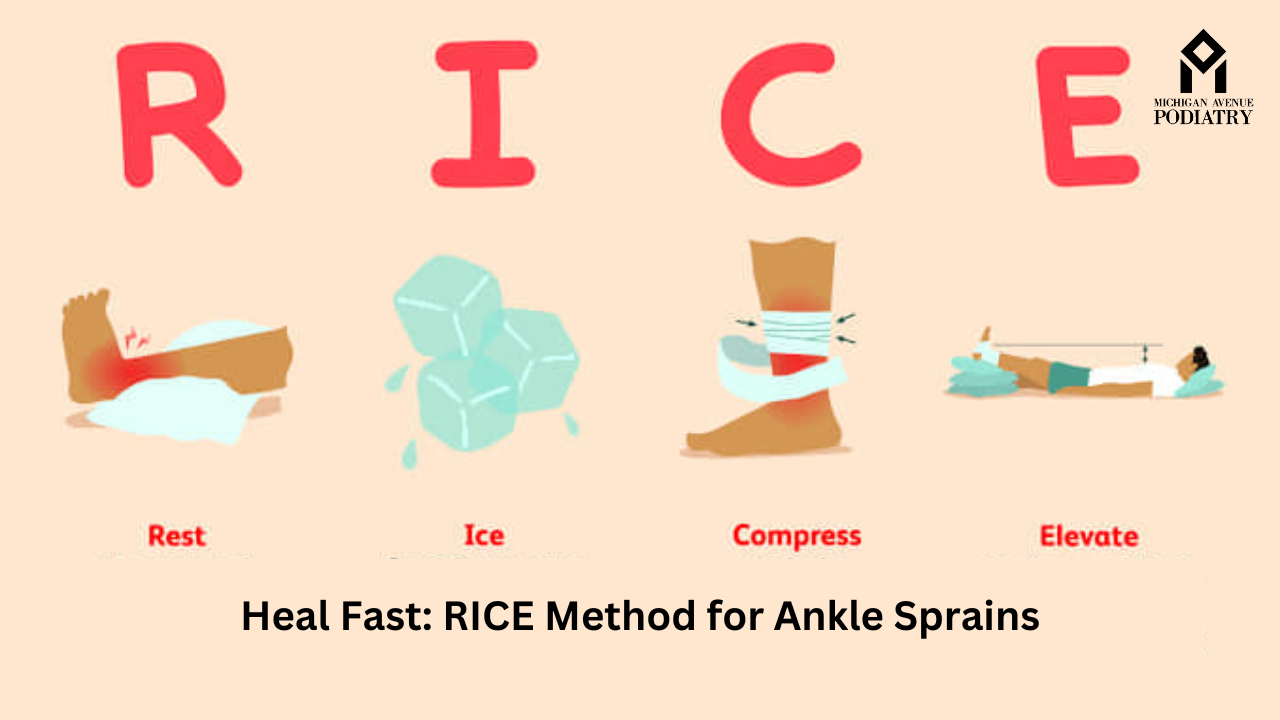Ankle sprains are one of the most common injuries, affecting individuals of all ages and activity levels. Whether you’re an athlete on the field or a weekend warrior at home, an ankle sprain can occur suddenly, causing pain, swelling, and difficulty walking. However, knowing how to administer immediate first aid can make a significant difference in the recovery process. In this comprehensive guide, we will explore the R.I.C.E. method (Rest, Ice, Compression, Elevation) and other essential first-aid techniques recommended by podiatrists and foot doctors for managing ankle sprains effectively.
Understanding Ankle Sprains:
An ankle sprain occurs when the ligaments surrounding the ankle joint are stretched or torn, typically as a result of sudden twisting or rolling of the foot. Common causes of ankle sprains include sports injuries, accidental falls, uneven terrain, and improper footwear. Depending on the severity of the sprain, symptoms may range from mild discomfort and swelling to severe pain and instability.
Immediate First Aid for Ankle Sprains:
Prompt and appropriate first aid is essential for minimizing pain, reducing swelling, and promoting healing following an ankle sprain. Here’s what to do in the immediate aftermath of an ankle sprain:
- Rest: Immediately stop any activity and avoid putting weight on the injured ankle. Resting the ankle allows the damaged ligaments to begin healing and prevents further injury.
- Ice: Apply ice to the injured ankle as soon as possible to reduce swelling and alleviate pain. Use a cold pack or a bag of ice wrapped in a thin towel and apply it to the affected area for 15-20 minutes at a time, several times a day.
- Compression: Wrap the injured ankle with a compression bandage to provide support and reduce swelling. Be sure not to wrap it too tightly, as this can impede circulation and cause additional discomfort.
- Elevation: Elevate the injured ankle above the level of the heart to further reduce swelling and promote drainage of excess fluid. Prop the ankle up on pillows or cushions while lying down or sitting.
The R.I.C.E. Method for Ankle Sprains:
The R.I.C.E. method is a widely recognized approach for treating acute injuries such as ankle sprains. Here’s how to implement each component of the R.I.C.E. method:
- Rest: Avoid putting weight on the injured ankle and refrain from engaging in activities that exacerbate pain or discomfort. Rest allows the body to focus its energy on healing the damaged tissues.
- Ice: Apply ice to the injured ankle for 15-20 minutes every 2-3 hours during the first 48 hours following the injury. Ice helps reduce swelling, numb pain, and constricts blood vessels to limit bleeding and inflammation.
- Compression: Use a compression bandage or elastic wrap to gently compress the injured ankle, providing support and minimizing swelling. Start wrapping at the toes and work your way up, ensuring even pressure without restricting circulation.
- Elevation: Elevate the injured ankle above the level of the heart whenever possible to facilitate drainage of excess fluid and reduce swelling. Keep the ankle elevated while resting, sleeping, or sitting.
Additional First Aid Tips for Ankle Sprains:
In addition to the R.I.C.E. method, consider implementing the following first aid measures for optimal management of ankle sprains:
- Pain management: Over-the-counter pain relievers such as ibuprofen or acetaminophen can help alleviate pain and discomfort associated with ankle sprains. Follow the recommended dosage instructions and consult with a healthcare professional if you have any concerns.
- Immobilization: If necessary, immobilize the injured ankle using a splint or brace to prevent further movement and promote stabilization. Avoid putting weight on the injured ankle until it has been evaluated by a healthcare provider.
- Seek medical attention: While many ankle sprains can be effectively managed at home with the R.I.C.E. method and proper rest, severe or recurrent sprains may require medical evaluation and treatment. Consult with a podiatrist or foot doctor if you experience severe pain, inability to bear weight, persistent swelling, or signs of infection.
Conclusion:
Ankle sprains are a common injury that can occur unexpectedly, causing pain and discomfort. By administering prompt and appropriate first aid using the R.I.C.E. method (Rest, Ice, Compression, Elevation) and following additional first aid tips recommended by podiatrists, you can effectively manage ankle sprains and promote healing. Remember to prioritize rest, avoid aggravating activities, and seek medical attention if necessary to ensure a speedy and successful recovery. With proper care and attention, you can get back on your feet and resume your normal activities with confidence.




